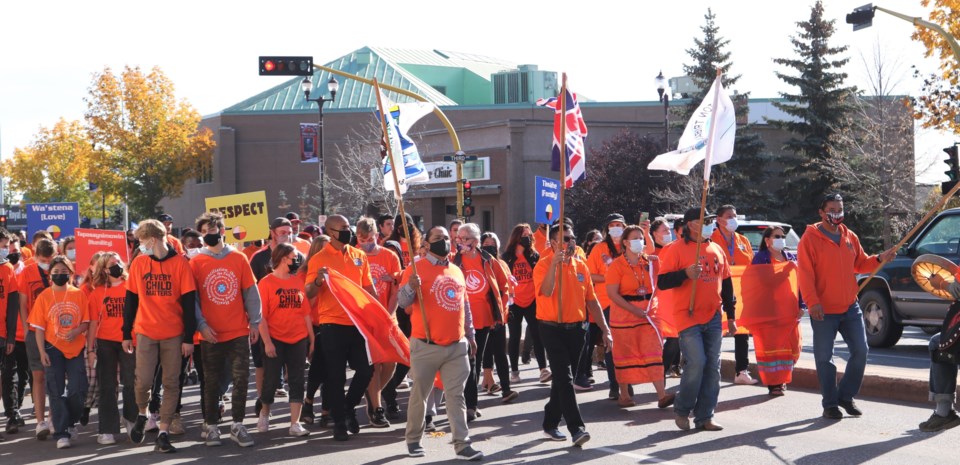KAMSACK - Ground-penetrating radar has uncovered 54 possible burial sites at two former residential schools near Kamsack in southwestern Saskatchewan.
In a news conference today, Ted Quewezance, project manager of the search and former chief of Keeseekoose First Nation, said there were 42 “hits” at Fort Pelly residential school and 12 at the St. Philip residential school.
“The historical record of Keeseekoose, the oral tradition includes what survivors directly experienced, what survivors saw, what survivors heard regarding the activities at the Fort Pelly and St. Philip residential school. These stories have been part of our truth-telling for the last 125 years. We all knew that we would find grave sites,” said Quewezance.
The areas to scan were directed by survivors and knowledge keepers. The scanning came to an end because of the snowfall.
Quewezance said the findings at the two residential schools would impact not only the people on Keeseekoose First Nation, but also nearby Key and Cote First Nations, whose children also attended those schools.
“It’s a very solemn day but at the same time gives us closure and it also opens up the door for more questions. What happened? What really happened?” said Keeseekoose First Nation Chief Lee Kitchemonia.
Kitchemonia said growing up in Keeseekoose he heard the stories, including from his parents, about all the children who had gone to residential school but who had never come back.
It was a memory echoed by Mary Culbertson, the first Indigenous woman to serve as treaty commissioner for Saskatchewan. She also comes from Keeseekoose First Nation.
“Growing up here, you’d hear the stories, our oral history. You knew places you couldn’t go along to play,” she said. “Those horrible stories…that I remember when we were kids.”
Quewezance said the news of the 215 uncovered burial sites at Kamloops residential school last spring “triggered” survivors right across the country.
“We knew that we had to go through the same process and we did and it was hard. It wasn’t easy,” he said. “The ground-penetrating radar simply validated our oral history.”
Quewezance said identifying the children in those graves and holding someone accountable for their deaths would be the next steps.
He said a draft memorandum of agreement was in the works with the National Truth and Reconciliation Centre in Winnipeg, and they had “reached out” to the Regina archdiocese.
Both residential schools were operated by the Catholic church.
“I acknowledge the intense emotions many of you (survivors) feel today and I acknowledge how you have suffered,” said Bishop Donald Bolen from the Regina archdiocese.
“We are profoundly sorry for the role Catholics played in the schools and the abuse that you suffered and the racism and the intergenerational trauma,” he said.
Bolen said the church would continue to follow a survivor-led process to put their apology into action.
Both Assembly of First Nations National Chief RoseAnne Archibald and AFN Regional Chief Bobby Cameron, who is also chief of the Federation of Sovereign Indian Nations of Saskatchewan stressed the need for accountability. Both joined the announcement virtually.
“We have to hold the governments to account, the government of Canada particularly, and the churches,” said Archibald.
“The healing path forward is about accountability. If these were 54 non-Indigenous white children, the RCMP and other authorities would descend upon these sites and begin investigations. These are crime scenes,” she said.
Crown-Indigenous Relations Minister Marc Miller also joined virtually, calling the findings “devastating” and re-committing his government to supporting the work to uncover grave sites.
Fort Pelly Indian Residential School operated from 1885 until it closed in 1913. St. Phillips opened in 1928 and closed in 1969.






